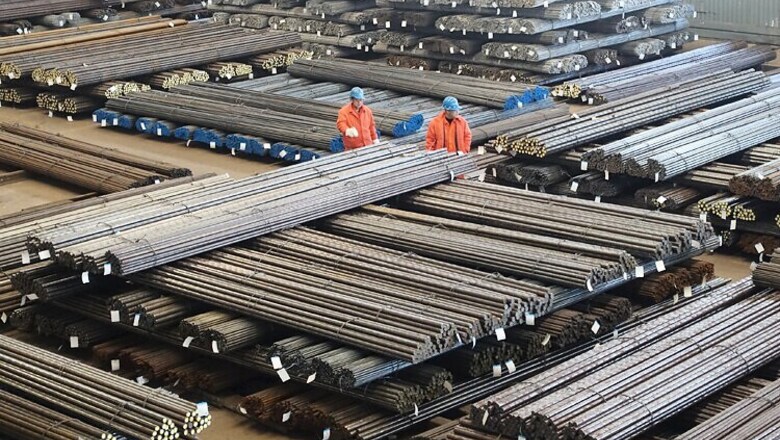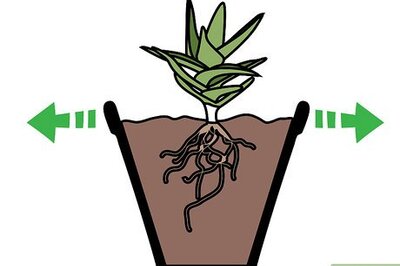
views
Beijing: China on said its economy continued to slow down in the first quarter in 2016, declining to 6.7% but in line with government targets amid claims by officials that several key indicators showed signs of stabilisation in the world's second largest economy.
The country's GDP grew 6.7% year-on-year to reach 15.9 trillion yuan ($2.4 trillion), data released by the National Bureau of Statistics (NBS) showed.
The growth further narrowed from the previous quarter's 6.8%, which was already the lowest quarterly rate in seven years.
Chinese economy logged 6.9% in 2015 the lowest in over two-and-a-half decades.
Officials however say that Q1 growth of 6.7% was in line with market expectations and remained within the government's targeted range between 6.5 and 7% for 2016.
New growth momentum is gathering and some major indicators have seen positive changes, NBS spokesperson Sheng Laiyun said at a press conference, calling the first-quarter performance "a good start" to this year.
The retail sales of consumer goods increased 10.3% in the first quarter year-on-year which points to increase in consumer demand as China tried to reset its export-led economy to one based on services and consumption to halt the slowdown.
In March, retail sales were up 10.5 per cent year-on-year, faster than the growth rate in the first two months this year. The value-added industrial output, an important economic indicator, expanded 5.8% year-on-year in the first quarter, accelerating from the 5.4% increase for the January-February period as per NBS data.
Fixed-asset investment rose 10.7% year-on-year in the first quarter, a faster expansion than 2015's 10%. Investment in the property sector grew 6.2%, accelerating from 1% for the whole of 2015.
Industrial output expanded 5.8%, accelerating from the 5.4 per cent increase for the January-February period. The service sector grew 7.6%, outpacing a 2.9% increase in the primary industry and 5.8% in the secondary industry. It accounted for 56.9% of the overall economy, up 2 percentage points from a year earlier, Sheng said.
A prolonged industrial glut, sagging foreign trade and cooling property investment dragged down China's growth in 2015 to 6.9%, the slowest pace in 25 years.
Authorities have taken a slew of measures to mitigate the downshift, cutting interest rates, reducing taxes, slashing overcapacity and initiating reforms to improve efficiency.
Thanks to these moves, the economy has seen some improvement since the beginning of 2016, with exports and industrial profits returning to growth, manufacturing activity picking up and power use accelerating, state-run Xinhua news agency reported.
Also investment in China's property sector rose 6.2% year-on-year in the first quarter of 2016. The expansion continued to pick up following the 3% increase for the January-February period and the 1% growth for the whole of 2015.
The new yuan-denominated lending in March amounted to 1.37 trillion yuan ($210 billion) that is 188.3 billion yuan more than a year earlier pointing to increased investments. In the first quarter, China's new yuan loans rose to 4.61 trillion yuan, up 930.1 billion yuan from a year earlier, the People's Bank of China (PBOC) said in a statement.
The M2, a broad measure of money supply that covers cash in circulation and all deposits, rose 13.4% year-on-year to 144.62 trillion yuan at the end of March, the bank said.



















Comments
0 comment